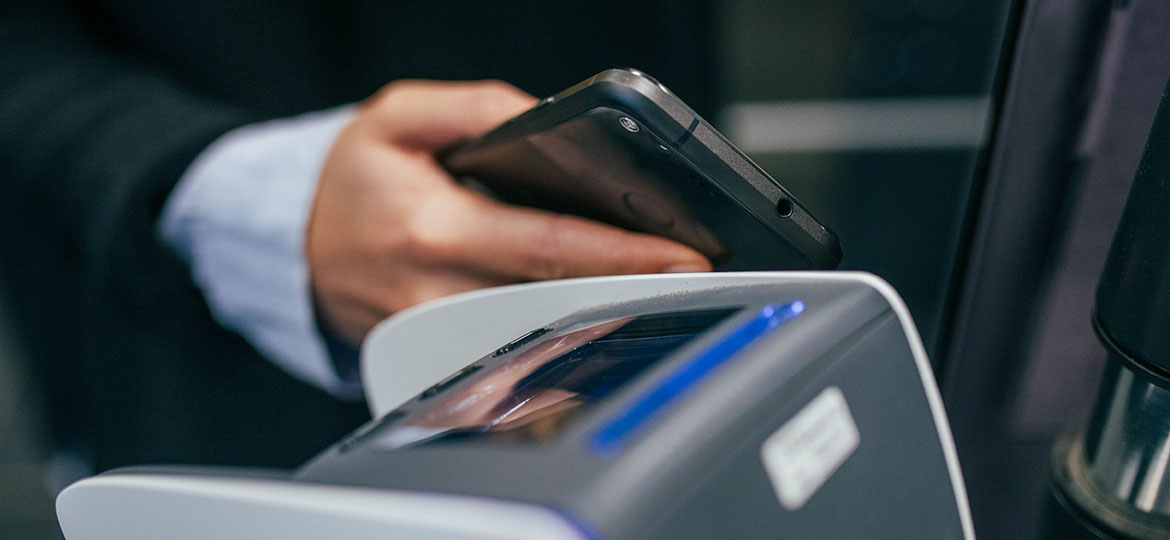

Contactless Payment Technology: 5 Things You Need to Know
If you use or accept credit cards, chances are you’ve heard of contactless payments. You might even use contactless payment forms such as tap and go with your card or your smartphone on the latest point-of-sale hardware. But have you implemented the relatively new technology into your own business yet? If you haven’t, or if you just want to learn more about contactless payment technology, you’re in the right place.
When EMV credit cards started using chip technology instead of a magnetic stripe, contactless payment technology came into play. So how does the technology work? It uses radio frequencies and Near Field Communication (NFC) to collect card holder data from the card. The card carries a built in antenna and communicates with the payment terminal via NFC. By now, your first thought is probably questioning the security of such payments. The following list will cover how secure this payment method is, as well as the other information you’ll need to decide whether or not contactless payments are the right choice for your business.
#1 Contactless payment technology saves time
Perhaps the most user-friendly of the many payments that exist, tap and go capabilities allow users to simply tap their card against a screen that will read their banking information immediately. They don’t have to wait to dip a chip-enabled card, and they don’t have to input a PIN to validate themselves as the authorized card holder.
Sometimes, these tap and go capabilities are even attached to self-service kiosks. Ease of use for your customers will make a world of a difference during their busy days. Being able to pop in and out of your shop will give them a reason to come back again when they’re in a hurry.
In conjunction with saving time, it also makes things a lot easier for customers who forgot their wallets while they ran to lunch or didn’t want to carry a purse with them. Since customers can store their credit card data securely on their phones in a form of a token, applications such as Google Pay or Apple Pay, contactless payments are available to make things easier.
#2 It makes for excellent customer service
In the same vein as saving time, contactless payment technology adds another layer of customer service to your business plan. Not only will your customers have the option of paying with cash, credit or debit, but now they can pay sans contact.
Implementing payment terminals that offer another way for your customers to pay tells your customers that you are following along with technology updates and you want to give them the option their banks have also offered. Imagine if customers had cards that allowed them to tap and go, but businesses didn’t adopt the technology to accept those payments.
Once your customers know that you accept frictionless payments, they’ll also be more likely to visit you again. What’s more, they’ll tell people they know that you accept tap and go payments. Since not all businesses have adopted this form of payment yet, it’ll be a good way to gain more customers.
#3 Security doesn’t just vanish
Despite not having any form of inner authentication the way a magnetic stripe or chip reader does, EMV has rolled out this new payment method on purpose. It’s actually more secure than ever.
Different from magnetic stripe-enabled credit cards, chip technology — which can be used to dip or for tap and go — uses encrypted data that changes with every transaction. So, for example, the latte your customer bought this morning will have a different payment code than the movie ticket she purchased at your theater tonight.
The purpose of this is to prevent fraudsters from being able to copy card information and thus steal bank information like they could with magnetic stripe cards. Contactless payment technology removes the step where card data is stored inside a payment terminal. This was a concern for many who used magnetic stripe based credit cards because of fraudulent behavior at stores such as hacking a Merchant’s server or database to collect stored credit card numbers.
When data constantly changes, hackers would have to know what the code would look like in advance of the payment. This is virtually impossible since the code is changed from terminal to terminal and bank to bank.
When customers tap and go to make a transaction, the account number on their cards is turned into a digital token with randomized numbers. These numbers don’t reflect the numbers on their cards, and can thus not be copied in order to obtain their banking information. Because these digital tokens are only shared between banks, the retailer won’t have access to card information.
#4 Contactless payment technology will increase foot traffic
Besides the word of mouth marketing that having contactless payment technology will afford your business, it will also make payments quicker. When you aren’t waiting for customers to sign signatures or insert pins and then wait to give cash back, you can move the line along.
Quick payments aren’t just a great way to increase positive customer service. They also allow you to complete more payments because there will be fewer customers who walk in and are flustered that the lines are too long and just walk out.
Tap and go payments can happen on a portable payment terminal too, which doubly helps move traffic in and out. If you’re helping a customer decide between two products in the corner of the store opposite the registers, that customer can still complete a payment if you have the right technology. Once the transaction goes through, your customer can skip the long lines and walk out with his new purchase.
#5 Cloud-based doesn’t mean freedom from tech issues
While there are many positive things about contactless payment technology and all its uses, one thing to keep in mind is that it is, at its core, just a machine. Just like there were days when EMV terminals couldn’t read magnetic strips, there will be days when the machine doesn’t run properly or won’t read the card information.
Hardware and software updates are your best bet when it comes to minimizing the amount of technical difficulties your business has with contactless payment technology. Consistent updates means bugs will be overridden and the latest programs can take effect.
Apart from making the normal, required updates, there are other factors to think about. Weather might cause your business to lose power. Luckily, cloud storage will back up any information you need regardless of weather outages. But the technology that finalizes the payments may be the part that doesn’t work. If it’s a portable payment system that works wirelessly, it’ll still work so long as it has a charge. If, however, the contactless payment terminal is a permanent fixture, you might not be able to use it.
 So, should you offer contactless payments?
So, should you offer contactless payments?
It’s hard to keep up with so much changing technology and be able to please your customers at the same time. Chances are, if your clientele is younger, you’ll want to look into implementing tools that help teenagers and young adults pay the way that is convenient for them.
If your customer base is an older one that prefers cash payments, you could fare well to do without contactless payment technology.
Because it’s the way most all payments might be made one day, it’s a good idea to at least have an idea about how they work and who they help. If you’re curious about different types of payment terminals, for example, unattended payments, reach out. Our team of professionals is happy to answer any of your business needs. We can even help you determine which payment method might be best for you. Contact us today!